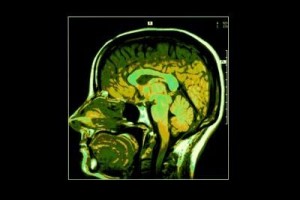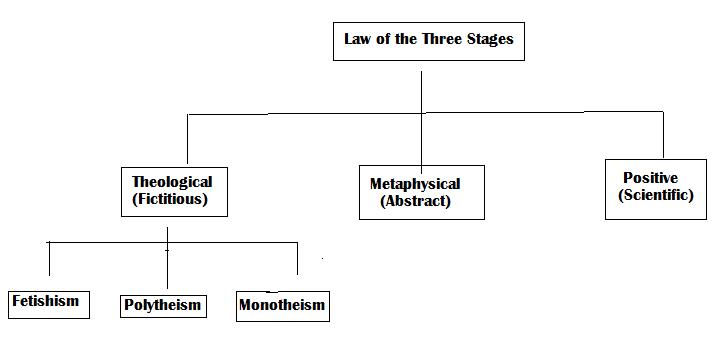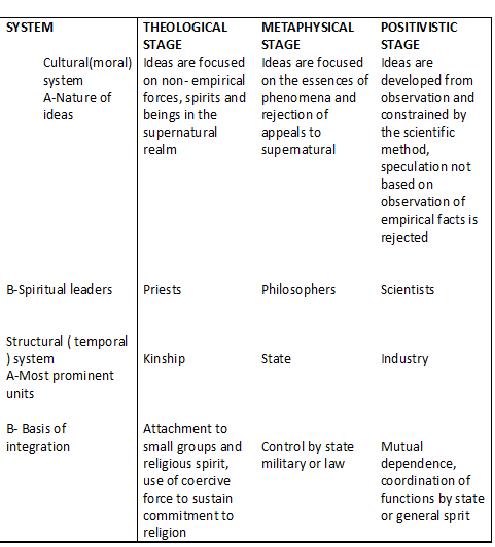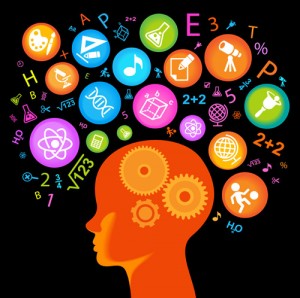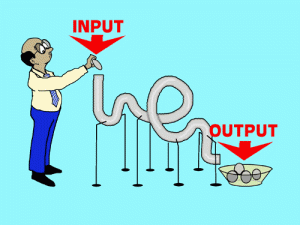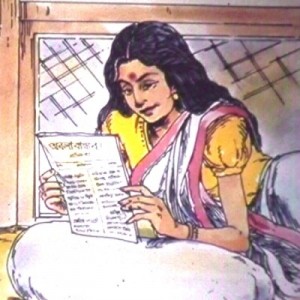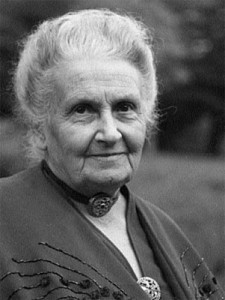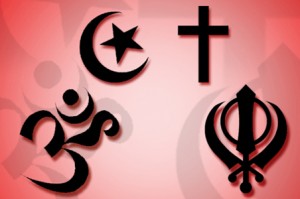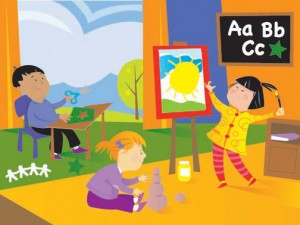| Dr. V.K. Maheshwari
M.A, M.Ed, Ph.D
Roorkee, India
|
Rakhi Maheshwari
M.A, B.Ed
Noida, India
|
A test consisting of factual questions requiring extremely short answers that can be quickly
and unambiguously scored by anyone with an answer key, thus minimizing subjective judgments by both theperson taking the test
and the person scoring it.
Dictionary.com Unabridged
The objective test otherwise regarded as the new type of test derives its name from the fact that the marking is done with a standard key. This key concept is that the students are provided with a problem to which a limited numbers of choices are presented for them to select the wanted answer.
Objective tests are those test items that are set in such a way that one and only one correct answer is available to a given item. In this case every scorer would arrive at the same score for each item for each examination even on repeated scoring occasions. It is so much structured that even where the student is to supply the answers, he is strictly limited to give specific and short answers. But students are given the opportunity to react to a large sample of questions which may cover the entire content area.
This type of items sometimes calls on examinees to recall and write down or to supply a word or phrase as an answer (free – response type). It could also require the examinees to recognize and select from a given set of possible answers or options the one that is correct or most correct (fixed-response type). This implies that the objective test consist sof items measuring specific skills with specific correct response to each of the items irrespective of the scorer’s personal opinion, bias, mood or health at the time of scoring.
When to use objective test
• It is used when highly structured task are needed to limit the type of response the examinees can make and to obtain correct answers from learners by demonstrating the specific knowledge or skill called for in the item.
• It is used to appraise more effectively the achievement of any of the educational objectives of simple learning outcomes as well as the complex outcomes in the knowledge, understanding, and application and even in higher levels covering large content areas if skilfully constructed. It is possible to set as many as 120 objective tests spread over many lesson units and several cognitive levels of educational objective for one hour or two hours.
• It is used when objective, quick, easy and accurate scoring is desired especially when the number of examinees is large.
• It is used to measure understanding, thinking skills and other complex learning outcomes of the learners.
• It can also be used for diagnosis of learning deficiency and the result used for remediation process.
Suggestions for Constructing the Objective Test Items
The writing a good test item is an art that requires some skill, time, perseverance, and creativity. The following are some general guidelines for the construction of any type of objective test item.
• The wording of the item should be clear and as explicit as possible.
• Avoid setting interrelated items
• Items should be designed to test important and not trivial facts or knowledge.
• Write an item to elicit discriminately the extent of examinees possession of only the desired behaviour as stipulated in the course instructional objectives answers.
• Ensure that there is one and only one correct or best answer to each item.
• Avoid unintentionally giving away the answer through providing irrelevant clues.
• Use language appropriate to the level of the examinees.
• Items in an achievement test should be constructed to elicit specific course content and not measure general intelligence.
• Have an independent reviewer to vet your test items.
Types of Objective test
The Objective test type items are of two types-
(A) Supply Test Items
(B) Selection Test Items
Supply Test Items can be further divided into two forms-
1. Short Answer
2. Completion Answers
Selection Test Items can also be further divided into-
1. Arrangement
2. True- False
3. Matching
4. Multiple Choice
Supply Test Items
This is the type of test item, which requires the student to give very brief answers to the questions. These answers may be a word, a phrase, a number, a symbol or symbols etc. in order to write effective supply test items, you should make use of these tips; construct the questions so as to be as brief as possible. The questions should be carefully worded so as to require an exact answer. Make sure that the questions have only one answer each.
Supply test items can be in the form of The free response type namely short-answer item and the completion item
The student is given a statement that requires him to fill in the blank(s), either in the statement itself, or at the end of it. As short answer implies, the expected response is usually a word o r phrase. This format is common in curriculum-based tests
The free response type of objective test tends to represent a compromise between the essay and the objective items. The free response type namely short-answer item and the completion item both are supply-type test items consisting of direct questions which require a short answer (short-answer type) or an incomplete statement or question to which a response must be supplied by an examinees (completion type). The answers to such questions could be a word, phrase, number or symbol. It is easy to develop and if well developed, the answers are definite and specific and can be scored quickly and accurately.
Selection Test Items
This is the type where possible alternatives are provided for the student to choose the most appropriate or the correct option.
Relative Merits of Selection-Type Items and Supply-Type Items
| CHARACTERISTIC |
SELECTION-TYPE
ITEMS |
SUPPLY-TYPE ITEMS |
| SHORT ANSWER |
ESSAY |
| Measures factual information |
Yes |
Yes |
Yes |
| Measures understanding |
Yes |
No |
Yes |
| Measures synthesis |
No |
No |
Yes |
| Easy to construct |
No |
Yes |
Yes |
| Samples broadly |
Yes |
Yes |
No |
| Eliminates bluffing |
Yes |
No |
No |
| Eliminates writing skill |
Yes |
No |
No |
| Eliminates blind guessing |
No |
Yes |
Yes |
| Easy to score |
Yes |
No |
No |
| Scoring is objective |
Yes |
No |
No |
| Pinpoints learning errors |
Yes |
Yes |
No |
| Encourages originality |
No |
No |
Yes |
An example of Supply type question in the class is:
a. short-answer test items: which requires that the student should provide a short answer to the question asked.
Example
* What is the technical drawing instrument used for measuring angles?
* Who was the first President of free India ?
b. Completion test items:
Which require the examinee to provide or complete one or more missing words in a sentence. Examples
* A triangle with all sides and all angles equal is called ……………..
*The name of the first President of free India was————-
Uses of the free – response type –
• It is suitable for measuring a wide variety of relatively simple learning outcomes such as recall of memorized information and problem solving outcomes measured in mathematics and sciences.
• It can be used to measure the ability to interprete diagrams, charts, graphs and pictorial data.
• It is used when it is most effective for measuring a specific learning outcome such as computational learning outcomes in mathematics and sciences.
Advantages
. The free – response type is very adaptable for item construction in mathematics, physical sciences and other areas where questions are computational problems requiring examinees to supply the solutions.
• It measures simple learning outcomes, which makes it easier to construct.
• It minimizes guessing because the examinees must supply the answer by either think and recall the information requested or make the necessary computations to solve the problem presented. It is unlike the selection item where partial knowledge might enable the examinee to choose the correct answer.
Disadvantages
• It is not suitable for measuring complex learning outcomes. It tends to measure only factual knowledge and not the ability to apply such knowledge and it encourages memorization if excessively used.
• It cannot be scored by a machine because the test item can, if not properly worded, elicit more than one correct answer. Hence the scorer must make decision about the corrections of various responses. For example, a question such as “Where was M.K.Gandhi born Could be answered by name of the town, state, country or even continent. Apart from the multiple correct answers to this question, there is also the possibility of spelling mistakes associated with free-response questions that the scorer has to contend with.
Types of items in Selection Test
This is the type where possible alternatives are provided for the student to choose the most appropriate or the correct option.
The Alternative response test item
This venerable format presents a statement, and the student must mark whether it is correct or not. It may take the form of true/false, yes/no, agree/disagree, or others, there are only two options.
The alternative response test item commonly called the true-false test item because the true-false option is commonly used consists of item with declarative statement to which the examinee is asked to give either of two options concerning the item. The two options could be true or false, right or wrong, correct or incorrect, yes or no, fact or opinion, agree or disagree and so on.
Most times the alternative response item includes opinion statement and the examinee is also required to response to them as merely true or false. The opinion item is not desirable from the standpoint of testing, teaching and learning. If opinion statement is to be used, it has to be attributed to some source thereby making it possible to assign the option of true or false to the statement based on knowledge concerning the belief held by an individual or the values supported by an organization or institution.
An example of alternative response item is as follows:
Read the following statement if the statement is true circle the T if it is false circle the F.
Solar Energy is the energy radiated from the sun.— T. F
The correct answer to the example above is true and is always true.
Uses of alternative response test item
• It is commonly used to measure the ability to identify the correctness of statements of fact, definitions of terms, statements of principles and other relatively simple learning outcomes to which a declarative statement might be used with any of the several methods of responding.
• It is also used to measure examinee ability to distinguish fact from opinion; superstition from scientific belief.
• It is used to measure the ability to recognize cause – and – effect relationships.
• It is best used in situations in which there are only two possible alternatives such as right or wrong, more or less, and so on.
Advantages
• It is easy to construct alternative response item but the validity and reliability of such item depend on the skill of the item constructor.To construct unambiguous alternative response item, which measures significant learning outcomes, requires much skill.
• A large number of alternative response items covering a wide area of sampled course material can be obtained and the examinees can respond to them in a short period of time.
Disadvantages
It requires course material that can be phrased so that the statement is true or false without qualification or exception as in the Social Sciences.
It is limited to learning outcomes in the knowledge area except for distinguishing between facts and opinion or identifying cause – and – effect relationships.
It is susceptible to guessing with a fifty-fifty chance of the examinee selecting the correct answer on chance alone. The chance selection of correct answer has the following effects.
It reduces the reliability of each item thereby making it necessary to include many items in order to obtain a reliable measure of achievement.
The diagnostic value of answers to guess test items is practically nil because analysis based on such response is meaningless.
The validity of examinees response is also questionable because of response set.
Response set is a consistent tendency to follow a certain pattern in responding to test items. For instance some examinees will consistently mark “true” those items they do not know while others will consistently mark them “false. Any given test will therefore favour one response set over another thereby introducing an element into the test score that is irrelevant to the purpose of the test.
The Multiple Choice Items
The multiple choice (MC) format is the most commonly used format in formal testing. It typically consists of a stem and three or more distractors, but can vary widely. The matching format can be thought of as an MC format, where several items share the same group of options. Multiple choice is popular for several reasons:
1. No subjective evaluation is required in scoring (the answer is either right or wrong, best or not best, not half-right or partly wrong).
2. It lends itself to detailed analysis of responses, in which even incorrect answers can provide information on the student’s skills.
3. It lends itself well to computer scoring.
The multiple choices item consists of two parts – a problem and a list of suggested solutions. The problem generally referred to as the stem may be stated as a direct question or an incomplete statement while the suggested solutions generally referred to as the alternatives, choices or options may include words, numbers, symbols or phrases. In its standard form, one of the options of the multiple choice item is the correct or best answer and the others are intended to mislead, foil, or distract examinees from the correct option and are therefore called distracters, foils or decoys. These incorrect alternatives receive the name from their intended function – to distract the examinees that are in doubt about the correct answer. An example of multiple-choice item is given below.
The art of growing short plants is known as;
(a)Ikebana
(b)Topiary
(c)Bonsai
(d)Pruning
The best-answer form of Multiple Choice Item is usually more difficult than the correct answer form. This is because such items are used to measure more complex learning outcomes. It is especially useful for measuring learning outcomes that require the understanding, application or interpretation of factual information.
Suggestions for construction of a Good Multiple Choice Item
There are some specific guidelines to follow when writing or evaluating MC items. Some relate to the stem, some to the options.
1. The stem should clearly state the problem. A good stem is often clear enough that a competent student can answer the item correctly without seeing any of the options.
2. The stem should contain as much as the item as possible, but no more. There is no point in redundantly repeating something in each option that can be stated in the stem. On the other hand, the stem should not wordy nor contain irrelevant information, known as window dressing. One exception would be a problem presented that requires the student to determine which facts presented are necessary to solve the problem.
3. The stem should, in most cases, be worded positively and in the active voice. When negatives do need to be used, they must be accentuated in boldface or ALLCAPS.
4. Use “story problems” – literally or figuratively – to present scenarios that require comprehension and analysis, not merely recall of the concept.
5. Always keep in mind that the primary goal in writing the response options in MC is to make it difficult for an uninformed person who is skilled at testing to figure out the correct answer. Knowledge of the construct being evaluated ideally plays the only factor in correctly answering an MC or any other item format.
6. Three or four options are best. It is difficult to write more than two or three plausible distracters.
7. All options should be parallel in structure and similar in length. The item is more readable, and there will be no obvious clues as to which options may be correct or are obviously incorrect.
8. Options must be grammatically consistent with the stem in order to prevent elimination of distracters.
9. All options must be plausible. If someone skilled, or at least comfortable, in a testing environment, were to take a test on a subject of which he knew nothing, he should not be able to dismiss options that seem to be implausible.
10. Distracters should reflect typical student errors, which makes them more plausible and more valuable in analyzing student performance.
11. The option, “All of the above”, is confusing and should generally be avoided. The option, “None of the above”, should only be used when there is one absolutely correct answer, as in spelling or math.
12. Options should avoid clang associations, in which the correct answer contains a word or phrase from the stem that the distracters lack.
13. Options should be placed in a logical order, such as numerical, alphabetical, or response length. On the other hand, placement of the correct response should be random. Any discernable pattern of correct answers can invalidate a test.
14. Options should not overlap each other; one option should not be a partial version of another.
Uses of the multiple-choice item
• The multiple-choice item is the most widely used of the types of test available. It can be used to measure a variety of learning outcomes from simple to complex.
• It is adaptable to any subject matter content and educational objective at the knowledge and understanding levels.
• It can be used to measure knowledge outcomes concerned with vocabulary, facts, principles, method and procedures and also aspects of understanding relating to the application and interpretation of facts, principles and methods.
• Most commercially developed and standardized achievement and aptitude tests make use of multiple-choice items.
Advantages
• The main advantage of multiple-choice test is its wide applicability in the measurement of various phases of achievement.
• It is the desirable of all the test formats being free of many of the disadvantages of other forms of objective items. For instance, it present a more well-defined problem than the short-answer item, avoids the need for homogenous material necessary for the matching item, reduces the clues and susceptibility to guessing characteristics of the true-false item and is relatively free from response sets.
• It is useful in diagnosis and it enables fine discrimination among the examinees on the basis of the amount of what is being measured possessed by them.
• It can be scored with a machine.
Disadvantages
• It measures problem-solving behaviour at the verbal level only.
• It is inappropriate for measuring learning outcomes requiring the ability to recall, organize or present ideas because it requires selection of correct answer.
• It is very difficult and time consuming to construct.
• It requires more response time than any other type of objective item and may favour the test-wise examinees if not adequately and skilful constructed.
Arrangement Type test items
In this case a number of concepts are presented for the testee to arrange them in a particular order.
Example: Arrange the following numbers in ascending order ofsize.
58, 75, 14, 69, 50, 35, 64 , 48 and 41.
* Arrange these in order of construction in building a house
Roof, foundation, floors, walls, floor finishes, painting, wiring.
The Matching Test Items
The matching test items usually consist of two parallel columns. One column contain a list of word, number, symbol or other stimuli (premises) to be matched to a word, sentence, phrase or other possible answer from the other column (responses) lists. The examinee is directed to match the responses to the appropriate premises. Usually, the two lists have some sort of relationship. Although the basis for matching responses to premises is sometimes self-evident but more often it must be explained in the directions.
The examinees task then is to identify the pairs of items that are to be associated on the basis indicated. Sometimes the premises and responses list is an imperfect match with more list in either of the two columns and the direction indicating what to be done. For instance, the examinee may be required to use an item more than once or not at all, or once. This deliberate procedure is used to prevent examinees from matching the final pair of items on the basis of elimination. An example of matching item is given below.
In this case two parallel columns or lists are involved. One list contains the questions or the premises, while the other list contains the responses. The responses which are usually more than the premises are to be matched according to a given instruction or directions. These two lists constitute the matching set. Examples: Given two lists A and B. match each from A to the correct from B.
Match the items in Set A with those in Set B
Set A Set B
March- 8 World animal welfare day
December- 1 World Ozone day
August – 6 World disabled day
March – 15 Hiroshima day
October – 4 International women’s day
September -16 World AIDS day
Uses of matching type items
• It is used whenever learning outcomes emphasize the ability to identify the relationship between things and a sufficient number of homogenous premises and responses can be obtained.
• Essentially used to relate two things that have some logical basis for association.
• It is adequate for measuring factual knowledge like testing the knowledge of terms, definitions, dates, events, references to maps and diagrams.
Recommendations for construction of the Matching type item
1. There should be more options than items. This will reduce the effectiveness of elimination and guessing.
2. Even better, the group of items should be designed to use some options more than once and some options not at all. This will nullify the process of elimination completely. If this is done, it must be explicitly stated in the directions. For example: “Answers may be used once, more than once, or not at all.”
3. If options may be used more than once, the pool of options can be much smaller and less confusing. Some very effective item groups of ten or more may have only three options for the entire group. An example would be listing various geographic and political characteristics of North American countries and having Canada, the United States, and Mexico as the three options.
4. Options must be homogenous. Do not mix crops with rivers or Roman numerals with geometric shapes. Note that item do not necessarily need to be homogenous, as long as the list of possible answers is. The idea is to prevent elimination based on test-taking skill.
5. Items and options should be ordered alphabetically or in some other logical arrangement. As in multiple choice, correct answers should form no discernable pattern.
Advantages
• The major advantage of matching exercise is that one matching item consists of many problems. This compact form makes it possible to measure a large amount of related factual material in a relatively short time.
• It enables the sampling of larger content, which results in relatively higher content validity.
• The guess factor can be controlled by skillfully constructing the items such that the correct response for each premise must also serve as a plausible response for the other premises.
• The scoring is simple and objective and can be done by machine.
• Cued answers. A competent test-taker can usually get one or more items correct “for free”, by using the process of elimination. A group of ten items with ten options often means that a student needs to know, at most, the answers to nine of the items.
• Non-homogenous options. Many, many groups of matching items are practically worthless because they mix totally unrelated things together as options. In such cases, a skilled student can use the process of elimination to dramatically increase his score, and very little valid testing has taken place.
• Excessively large groups of items or options. Since each item has the entire set of options as answer possibilities, a student may become overwhelmed with the amount of choices from which to select the correct answer.
Disadvantages
• It is restricted to the measurement of factual information based on rote learning because the material tested lend themselves to the listing of a number of important and related concepts.
• Many topics are unique and cannot be conveniently grouped in homogenous matching clusters and it is some times difficult to get homogenous materials clusters of premises and responses that can sufficiently match even for contents that are adaptable for clustering.
• It requires extreme care during construction in order to avoid encouraging serial memorization rather than association and to avoid irrelevant clues to the correct answer.
• It is easy to construct. Since options are used for more than one item, not nearly as much effort needs to be put into constructing each individual item.
• It is compact in size. An individual item usually takes only a fraction of the space occupied by one conventional MC item.
• It is usually time efficient for the test taker. He only needs to analyze one set of options for multiple items, provided the matching group is competently designed.
• It is very useful for working with groups of homogenous items, for example, matching states with their capitals.
Advantages of Objective Test
• Objective test enhances the assessment of learner’s response to test items because the scoring is not influenced by the scorer’s bias or disposition at the time of scoring but by the correctness of the answer. By overcoming the subjectivity of the essay test, the reliability of the test as measuring instrument is enhanced.
• Scoring of objective test is easy and takes little time. It is also scored by a machine and facilitates high efficiency in testing a large number of examinees.
• The result of objective test especially the multiple choice items can be used for diagnostic purposes since they provide clues for factual errors and misunderstanding that need remediation.
• It is adequate for sampling the subject matter and instructional objectives of the course because the relatively large number of items set enhances effective coverage of the content areas on which the test is based. The result provides a more valid and reliable ability of the examinees performance.
• It is efficient for measuring knowledge of facts. It can also be designed to measure understanding, thinking skills and other complex outcomes.
• Objective test items can be pre-test, refined through item analysis, standardized and reused a number of times if properly handled.
• It is fair to all examinees since it does not call on other skills outside the skill it is intended to measure. That is, its validity is not affected by good handwriting, bluffing or the verbiage.
Disadvantages of Objective Test
• It does not encourage the development of examinees originality in desirable skills such as the ability to select, organize or synthesize ideas and to present them correctly in a logical and coherent form. The complete structuring of task is not suitable for assessing learning abilities in this form.
• It tends to measure only factual knowledge. This disadvantage can be overcome by developing items for the objective items rigorously following the steps involved in item development process.
• Development of good objective test items requires training of test developers in the skills necessary for constructing effective, valid and reliable items.
• It needs time, commitment and adequate planning.
• Objective test items lend themselves to guessing especially when the test items are not skillfully developed. An examinee can guess correctly on few items and earn some undeserved points even in a well-constructed objective test. It is also easier to cheat in an objective test than in essay test if the test is poorly administered.
Differences between Essay type test and Objective type test
A-An essay test item requires the examinee to plan his own answer and to express it in his own words, while an objective test question requires him to choose distinguished alternatives.
B-An essay test consists of relatively few, more general questions which call for rather answers, while an objective test ordinarily consists of many rather specific questions requiring only brief answer.
C-Examinees spend of their time in thinking and writing when taking an essay test , while in objective test they spend most of their time in reading and thinking
.D- The quality of an essay test is determined largely by the skill of the reader of examinees answer , while the quality of an objective test is determined by the skill of the test constructor.
E- An essay test is relatively easy to prepare but relatively tedious to respond, while a good objective test is relatively tedious and difficult to prepare but relatively easy to respond. F-An essay test affords much freedom for the examinee to express his individuality in the answer he gives and much freedom for the examiner to be guided by his individual preferences in scoring the answer, while an objective test affords much freedom for the test constructor to express his knowledge and value but gives the examinee only the freedom to show, by the proportion of correct answer he gives, how much or how little he knows and can do.
F-Essay type tests encourages bluffing, while an objective test occasionally encourages guessing.
G- The distribution of numerical scores obtained from an essay tst can be controlled to a considerable degree by the examiner, while an objective test is almost determined entirely by the test.
H- Essay type test are less reliable and covers less content, while an objective type test is highly reliable and covers comparatively more content.
Scoring Objective Test
Answers to true–false, multiple-choice, and other objective-item types can be marked directly on the test copy. But scoring is facilitated if the answers are indicated by position marking a separate answer sheet. For example, the examinee may be directed to indicate his choice of the first, second, third, fourth, or fifth alternative to a multiple-choice test item by blackening the first, second, third, fourth, or fifth position following the item number on his answer sheet.
Answers so marked can be scored by clerks with the aid of a stencil key on which the correct answer positions have been punched. To get the number of correct answers, the clerk simply counts the number of marks appearing through the holes on the stencil key. Or the answers can be scored, usually much more quickly and accurately, by electrical scoring machines. Some of these machines, which “count” correct answers by cumulating the current flowing through correctly placed pencil marks, require the examinee to use special graphite pencils; others, which use photoelectric cells to scan the answer sheet, require only marks black enough to contrast sharply with the lightly printed guide lines. High-speed photoelectric test scoring machines usually incorporate, or are connected to, electronic data processing and print-out equipment.
Objective test can be scored by various methods. Various techniques are used to speed up the scoring:
i. Manual Scoring
In this method of scoring the answer to test items are scored by direct comparison of the examinees answer with the marking key. If the answers are recorded on the test paper for instance, a scoring key can be made by marking the correct answers on a blank copy of the test . Scoring is then done by simply comparing the columns of answers on the master copy with the columns of answers on each examinee’s test paper. Alternatively, the correct answers are recorded on scripts of paper and this script key on which the column of answers are recorded are used as master for scoring the examinees test papers.
ii. Stencil Scoring
Here separate sheet of answer sheets are used by examinees for recording their answers, it’s most convenient to prepare and use a scoring stencil. A scoring stencil is prepared by pending holes on a blank answer sheet where the correct answers are supposed to appear. Scoring is then done by laying the stencil over each answer sheet and the number of answer checks appearing through the holes is counted. At the end of this scoring procedure, each test paper is scanned to eliminate possible errors due to examinees supplying more than one answer or an item having more than one correct answer.
iii. Machine Scoring
If the number of examinees is large , a specially prepared answer sheets are used to answer the questions. The answers are normally shaded at the appropriate places assigned to the various items. These special answer sheets are then machine scored with computers and other possible scoring devices using certified answer key prepared for the test items.In scoring objective test, it is usually preferable to count each correct answer as one point. An examinee’s score is simply the number of items answered correctly.
Correction for guessing
One question that often arises is whether or not objective test scores should be corrected for guessing. Differences of opinion on this question are much greater and more easily observable than differences in the accuracy of the scores produced by the two methods of scoring. If well-motivated examinees take a test that is appropriate to their abilities, little blind guessing is likely to occur. There may be many considered guesses, if every answer given with less than complete certainty is called a guess. But the examinee’s success in guessing right after thoughtful consideration is usually a good measure of his achievement.
Since the meaning of most achievement test scores is relative, not absolute—the scores serve only to indicate how the achievement of a particular examinee compares with that of other examinees—the argument that scores uncorrected for guessing will be too high carries little weight. Indeed, one method of correcting for guessing results in scores higher than the uncorrected scores.
The logical objective of most guessing correction procedures is to eliminate the expected advantage of the examinee who guesses blindly in preference to omitting an item. This can be done by subtracting a fraction of the number of wrong answers from the number of right answers, using the formula S = R – W/(k – 1) where S is the score corrected for guessing, R is the number of right answers, W is the number of wrong answers, and k is the number of choices available to the examinee in each item. An alternative formula is S = R + O/kwhere O is the number of items omitted, and the other symbols have the same meaning as before. Both formulas rank any set of examinee answer sheets in exactly the same relative positions, although the second formula yields a higher score for the same answers than does the first.
Logical arguments for and against correction for guessing on objective tests are complex and elaborate. But both these arguments and the experimental data point to one general conclusion. In most circumstances a correction for guessing is not likely to yield scores that are appreciably more or less accurate than the uncorrected scores.

